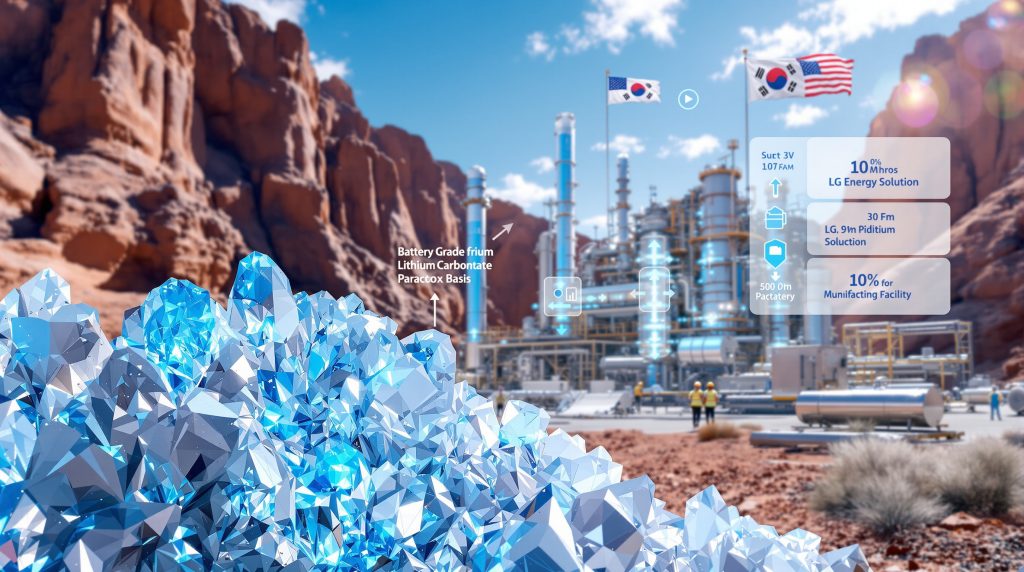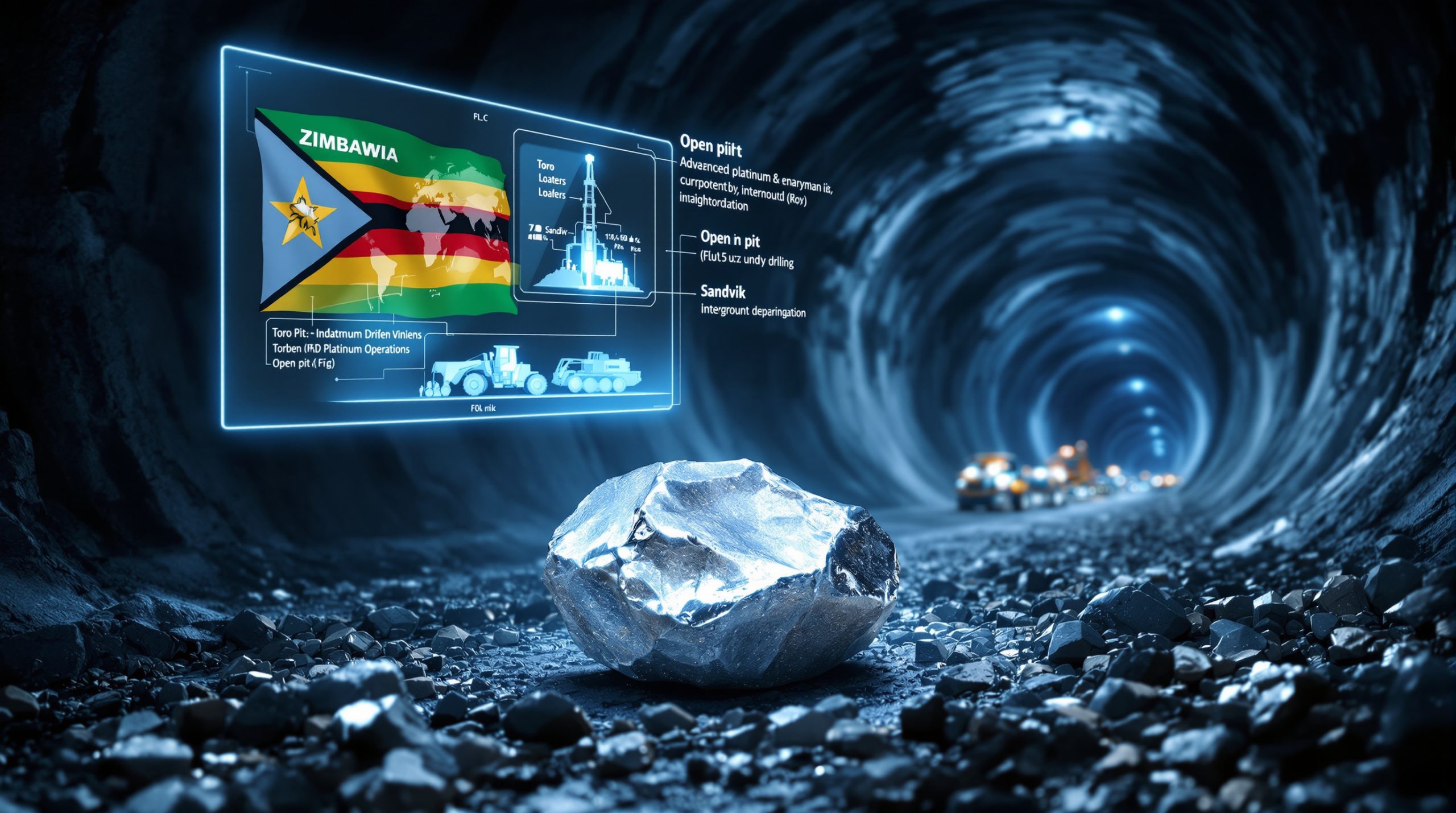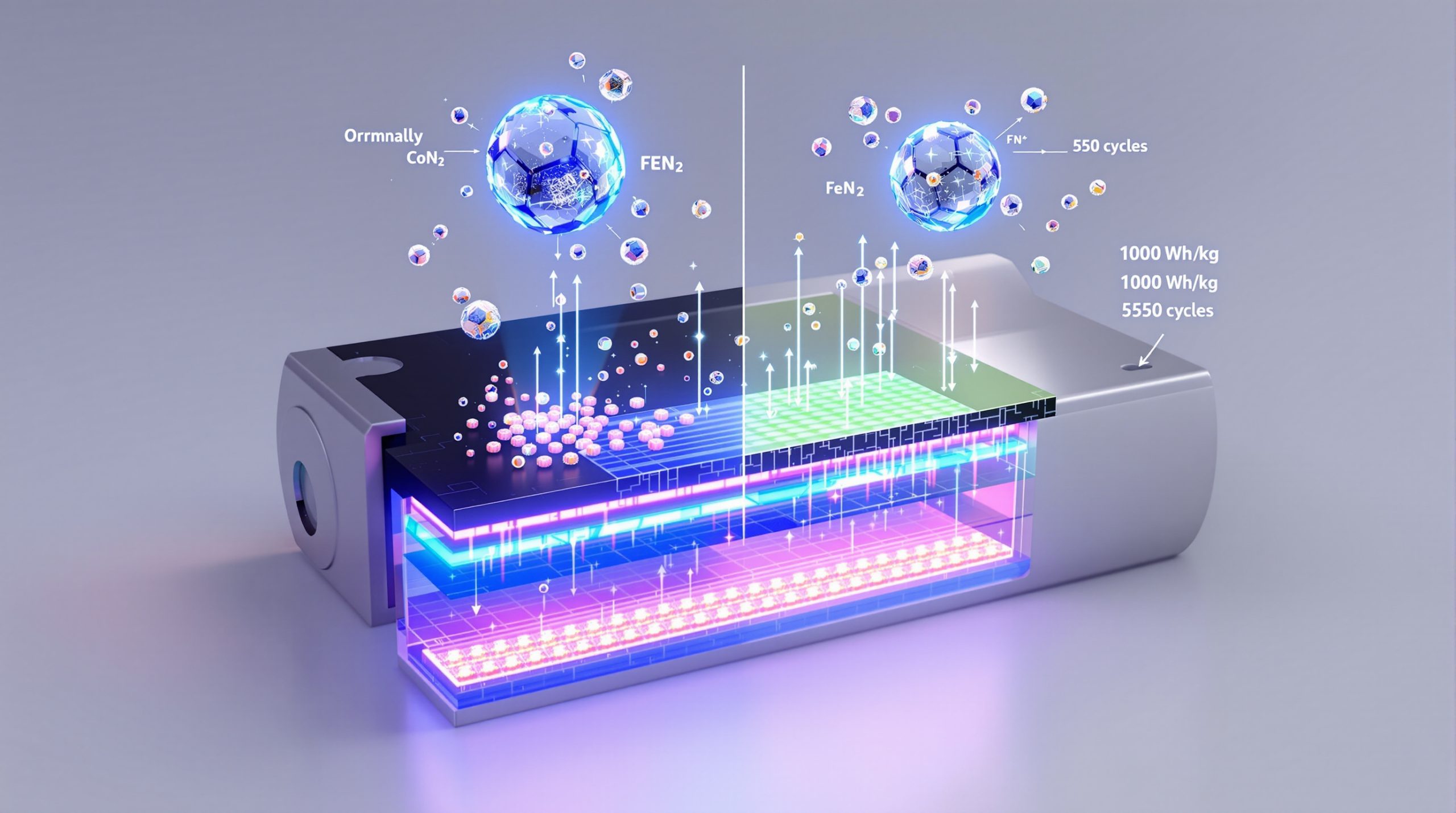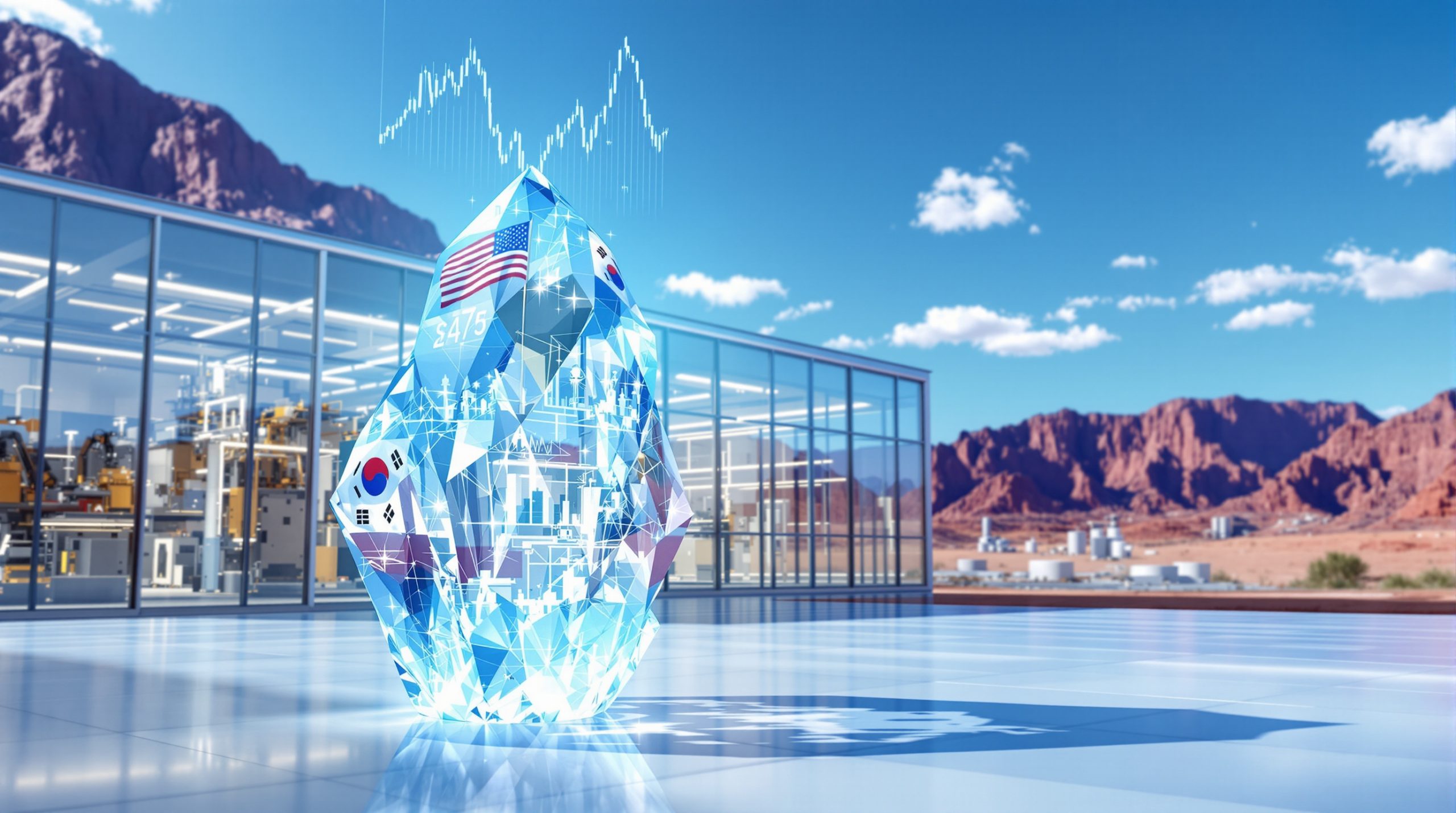What Does the Anson-LG Energy Solution Deal Involve?
The strategic partnership between Anson Resources and LG Energy Solution marks a significant milestone in North American lithium production. Announced on September 23, 2025, this binding anson resources lg energy solution lithium offtake deal establishes a framework for long-term collaboration between the Australian mining company and the South Korean battery manufacturer.
Key Agreement Terms
The deal centers around a five-year binding offtake agreement for battery-grade lithium carbonate with impressive specifications. Under the terms, LG Energy Solution will purchase 4,000 dry metric tonnes (DMT) of lithium carbonate annually, representing approximately 40% of Anson's planned initial production capacity of 10,000 tonnes per year.
Supply is anticipated to commence in 2028, with product qualification requirements to be met by the end of 2027. The agreement includes an option for a five-year extension by mutual agreement, demonstrating both companies' commitment to establishing an enduring partnership.
The lithium carbonate will meet battery-grade specifications with 99.5% purity, suitable for lithium iron phosphate (LFP) battery production—a segment experiencing significant growth, particularly in the Chinese market.
Project Specifics
The lithium will be sourced from Anson's Paradox Basin project in Utah, USA—a strategic location that aligns with growing interest in domestic critical mineral production. The project employs DLE technology insights, processing lithium from deep confined aquifers rather than traditional evaporation ponds.
This US-based production positions the project favorably within the current administration's push for domestic supply chain security. With Trump's critical minerals order, policies supporting critical mineral production on American soil have gained renewed emphasis.
The project's location in Utah offers logistical advantages for North American battery manufacturing, reducing transportation costs and supply chain risks compared to overseas lithium sources.
Why Is This Partnership Significant for Both Companies?
The anson resources lg energy solution lithium offtake deal represents more than just a supply contract—it establishes a strategic alignment between a developing lithium producer and one of the world's leading battery manufacturers.
Strategic Benefits for Anson Resources
For Anson Resources, the agreement secures a commercial pathway for nearly 40% of their planned production, providing revenue certainty critical for project financing. This relationship with a tier-one battery manufacturer validates the quality and commercial viability of their Paradox Basin lithium resource.
The agreement significantly enhances project bankability for debt financing, a crucial factor as Anson approaches its final investment decision (FID) stage. By securing a major customer before production begins, Anson demonstrates to potential investors that market demand exists for their product.
As Anson CEO Bruce Richardson noted, "This definitive offtake agreement establishes the foundation for a long-term partnership and we are proud that we will be supplying low-cost U.S.-made lithium from the Paradox Basin to LG Energy Solution."
Strategic Benefits for LG Energy Solution
From LG Energy Solution's perspective, the agreement secures access to US-based lithium supply—a strategic priority as battery manufacturers seek to diversify their supply chains away from concentrated sources in South America, Australia, and China.
The deal potentially qualifies for benefits under the Inflation Reduction Act (IRA), which provides incentives for electric vehicles containing minerals sourced domestically or from free trade agreement partners. This alignment with policy incentives could provide LG Energy Solution with competitive advantages in the US market.
The agreement specifically supports lithium iron phosphate (LFP) battery production, a technology gaining traction due to its lower cost and reduced reliance on cobalt and nickel. By securing lithium supply for LFP batteries, LG Energy Solution positions itself to compete effectively in this growing market segment.
How Does This Agreement Impact the Broader Lithium Market?
The Anson-LG Energy Solution partnership contributes to several emerging trends in the global lithium market, particularly the development of regional supply chains and diversification of production sources.
North American Lithium Supply Chain Development
This agreement represents another step in strengthening domestic US mineral production policy. While 4,000 tonnes annually may seem modest in the global context, it signals growing confidence in North American lithium projects.
The deal supports the broader regional battery manufacturing ecosystem, which has seen significant investment in recent years. With battery gigafactories being established across North America, securing local lithium supply becomes increasingly strategic.
The agreement aligns with government initiatives for critical mineral security, which have gained prominence under the Trump administration's return to office in 2025. These policies emphasize reducing dependency on foreign sources for materials deemed critical to national security and economic prosperity.
The commercial viability demonstrated by this agreement may encourage other US lithium projects to advance, potentially creating a more robust domestic lithium industry over time.
Global Lithium Supply Considerations
In the global context, this agreement represents a modest but meaningful contribution to lithium supply diversification. While major producers in Australia, Chile, and Argentina will continue to dominate production, the emergence of new sources like the Paradox Basin project indicates a maturing market.
The deal signals continued battery metals investment despite fluctuations in market prices. Battery manufacturers are clearly planning for long-term supply needs rather than focusing solely on current market conditions.
The preference for geopolitically stable supply sources is evident in this partnership, reflecting the battery industry's growing awareness of supply chain risks. US-based production offers advantages in terms of political stability and regulatory predictability compared to some alternative sources.
What Technical Aspects Make This Project Notable?
Anson's Paradox Basin project employs several innovative approaches that distinguish it from traditional lithium operations, with technology selection playing a crucial role in its development strategy.
Production Technology and Methodology
At the core of the project is direct lithium extraction (DLE) technology, which processes lithium from deep confined aquifers. Unlike conventional evaporation pond methods used in South America, DLE offers potential advantages in extraction efficiency, processing speed, and environmental footprint.
The technology focuses specifically on producing battery-grade lithium carbonate with 99.5% purity—specifications that meet the rigorous requirements of battery manufacturers. This high-quality focus is essential for applications in lithium iron phosphate batteries.
DLE methods generally require less land use than evaporation ponds and can potentially reduce water consumption compared to traditional methods. This smaller environmental footprint may facilitate permitting and community acceptance in Utah.
The project aims to establish more sustainable lithium production through these innovative extraction techniques, potentially setting new benchmarks for the industry as it evolves.
Project Development Timeline
The supply commencement target of 2028 reveals the multi-year development cycle typical for lithium projects. This timeline encompasses remaining technical development, construction, commissioning, and qualification phases.
Product qualification requirements must be met by the end of 2027, establishing a clear deadline for Anson to demonstrate that their lithium carbonate meets LG Energy Solution's specifications. This qualification process is standard but critical in battery supply chains.
The timeline demonstrates the forward planning required by battery manufacturers, who must secure material supplies years in advance of actual production needs. This long-term perspective is characteristic of the battery materials sector.
What Financial Implications Does This Agreement Have?
The financial aspects of the anson resources lg energy solution lithium offtake deal extend beyond simple supply and demand dynamics, creating substantial project finance advantages.
Investment and Funding Considerations
The agreement is expected to significantly support Anson's debt funding efforts at the final investment decision stage. Secured offtake agreements are typically viewed favorably by lenders as they provide revenue certainty and reduce market risk.
While specific pricing mechanisms weren't disclosed, the agreement likely establishes market-based pricing formulae that provide both parties with clarity on commercial terms. Such arrangements typically balance price stability with some flexibility to reflect market movements.
The agreement creates a foundation for potential equity participation, though no direct investment by LG Energy Solution in Anson was announced as part of this deal. However, strategic offtake agreements sometimes evolve to include equity components.
The commercial framework established by the agreement allows for more concrete revenue projections, enhancing Anson's ability to secure project financing on favorable terms.
Market Position and Competitive Analysis
This agreement positions Anson as an emerging US lithium producer with a clear path to market through a tier-one customer. This status may enhance the company's ability to secure additional offtake agreements for its remaining production capacity.
LG Energy Solution's willingness to commit to this agreement signals its interest in upstream investments and securing supply chain control. This vertical integration strategy is becoming increasingly common among battery manufacturers.
The commercial viability demonstrated by this agreement may establish benchmarks for future lithium offtake agreements, potentially influencing terms and conditions across the industry.
What Are the Future Expansion Possibilities?
The initial agreement between Anson Resources and LG Energy Solution lays groundwork for potential growth and deeper collaboration as both the project and partnership mature.
Growth Potential for the Partnership
The five-year extension clause provides a mechanism for doubling the partnership's duration to ten years, offering both companies long-term stability while maintaining flexibility. This balanced approach allows for relationship deepening while accommodating market changes.
While not explicitly mentioned in announcements, the agreement may create opportunities to increase supply volumes over time as Anson's production capacity grows. Initial offtake agreements often evolve to encompass larger volumes as projects expand.
The framework established by this offtake agreement could lead to additional collaboration in areas like technical development, resource expansion, or downstream integration. Battery manufacturers increasingly seek deeper involvement in their supply chains.
Project Scaling Considerations
With an initial production capacity of 10,000 tonnes annually and 60% of this capacity still available for additional offtake agreements, Anson has significant room to establish relationships with other customers or expand its commitment to LG Energy Solution.
The Paradox Basin resource potentially supports expansion beyond the initial production capacity, subject to resource confirmation, technical feasibility, and market conditions. Resource expansion could provide the foundation for production growth over time.
As production begins and operational experience accumulates, opportunities for technology improvements may emerge that could increase yield, reduce costs, or enhance product quality. Such operational optimizations often follow initial production startup.
How Does This Deal Compare to Other Lithium Offtake Agreements?
Placing the anson resources lg energy solution lithium offtake deal in context requires examining its structure and terms relative to industry standards and comparable deals.
Comparative Market Analysis
The five-year term with extension option aligns with standard industry practice for initial offtake agreements, balancing commitment with flexibility. This structure is similar to other battery manufacturer offtake deals, which typically range from three to seven years.
At 4,000 tonnes annually, the volume represents a moderate commitment compared to major global agreements but is significant in the context of emerging US lithium production. This volume is substantial enough to provide meaningful revenue security while leaving capacity available for diversification.
The agreement's focus on battery-grade lithium carbonate reflects growing demand for this specification, particularly for LFP battery production. This specification aligns with expanding applications in energy storage and entry-level electric vehicles.
The US production location gives this agreement distinctive characteristics compared to deals involving Australian or South American production, potentially qualifying it for policy incentives not available to imported materials.
Industry Benchmarking
The inclusion of extension options is consistent with industry standard practices, allowing both parties to maintain flexibility while creating a pathway to long-term collaboration. Such options are nearly universal in lithium offtake agreements.
The commitment to approximately 40% of planned production capacity represents a typical proportion for initial offtake agreements, providing significant revenue security while maintaining diversification potential. This percentage balances customer concentration risk with the benefits of a major anchor customer.
While pricing details weren't disclosed, market-based pricing mechanisms have become standard in lithium offtake agreements, typically involving formulas based on industry benchmarks with potential floors and ceilings.
The conditions precedent likely include standard requirements regarding final investment decision, construction completion, and product qualification—typical milestones in resource project development.
What Challenges Must Be Addressed for Successful Implementation?
Despite the positive aspects of the agreement, several significant challenges must be overcome to ensure successful execution of both the partnership and the underlying project.
Technical and Operational Considerations
Meeting product qualification requirements by the end of 2027 represents a critical milestone. Battery-grade lithium carbonate must meet strict specifications for impurities, consistency, and performance in battery applications—requirements that can be challenging for new operations.
Scaling DLE technology from pilot to commercial production presents technical challenges that must be overcome. While DLE shows promise, its commercial implementation at scale remains less proven than conventional evaporation methods.
Maintaining consistent product quality specifications across production batches requires sophisticated quality control systems and operational discipline. Battery materials demand extraordinary consistency for performance and safety reasons.
Optimizing extraction efficiency and yield will be crucial for project economics, especially in competitive market conditions. Continuous improvement in these metrics typically follows initial production as operational experience accumulates.
Market and Economic Factors
Lithium market challenges present a significant hurdle for both parties. Since the 2022-2023 price spike and subsequent correction, lithium markets have demonstrated considerable fluctuation, creating uncertainties for project economics.
Securing the remaining project financing will require navigating evolving capital markets and investor sentiment toward lithium projects. While the offtake agreement enhances bankability, market conditions and interest rates will influence financing terms.
Production costs must be managed carefully in changing market conditions to maintain competitiveness. Energy costs, reagent prices, and labor expenses all impact operating margins and must be controlled effectively.
Potential supply chain bottlenecks for equipment, materials, or specialized labor could impact project development timelines. These risks are particularly relevant given ongoing supply chain disruptions in various industrial sectors.
Frequently Asked Questions About the Anson-LG Energy Solution Deal
What is the significance of this being a US-based lithium project?
The US location provides multiple strategic advantages. It potentially qualifies for Inflation Reduction Act benefits, which can provide tax credits and incentives for domestically sourced battery materials. The project faces reduced geopolitical risk compared to operations in less stable regions, and it offers shorter supply chains for North American battery production. Additionally, the location aligns with domestic critical mineral security initiatives prioritized under the current administration.
How does this agreement support Anson's project development?
The offtake agreement provides commercial certainty for 40% of planned production, significantly enhancing project bankability for securing financing. It validates the project's viability to investors by demonstrating market demand from a reputable customer. The agreement establishes revenue projections that support financial modeling and investment decisions. Additionally, it creates a foundation for potential further investment or collaboration with LG Energy Solution.
What makes the Paradox Basin lithium project technically distinctive?
The project utilizes direct lithium extraction technology to process lithium from deep confined aquifers, offering potential advantages in extraction efficiency and environmental impact compared to traditional methods. This approach generally requires less land and potentially less water than conventional evaporation ponds. The focus on battery-grade lithium carbonate production demonstrates technical capability to meet stringent purity requirements. The Utah location provides access to established infrastructure while tapping into a less developed lithium resource region.
How does this agreement reflect broader trends in the lithium market?
This deal demonstrates the growing importance of securing domestic lithium supplies as countries prioritize supply chain security for critical minerals. It shows battery manufacturers' willingness to engage directly with upstream producers rather than relying solely on commodity markets. The agreement reflects the strategic value placed on US-based lithium production in an increasingly competitive global market. It also highlights the forward planning required in battery supply chains, with commitments made years before actual production commences.
Wondering How to Gain an Early Edge on Major Mineral Discoveries?
Discover how significant ASX mineral discoveries like Anson Resources can create substantial investment opportunities by exploring Discovery Alert's proprietary Discovery IQ model, which delivers real-time alerts on major mineral finds before the broader market. Visit the Discovery Alert discoveries page today to secure your 30-day free trial and position yourself ahead of the market.




